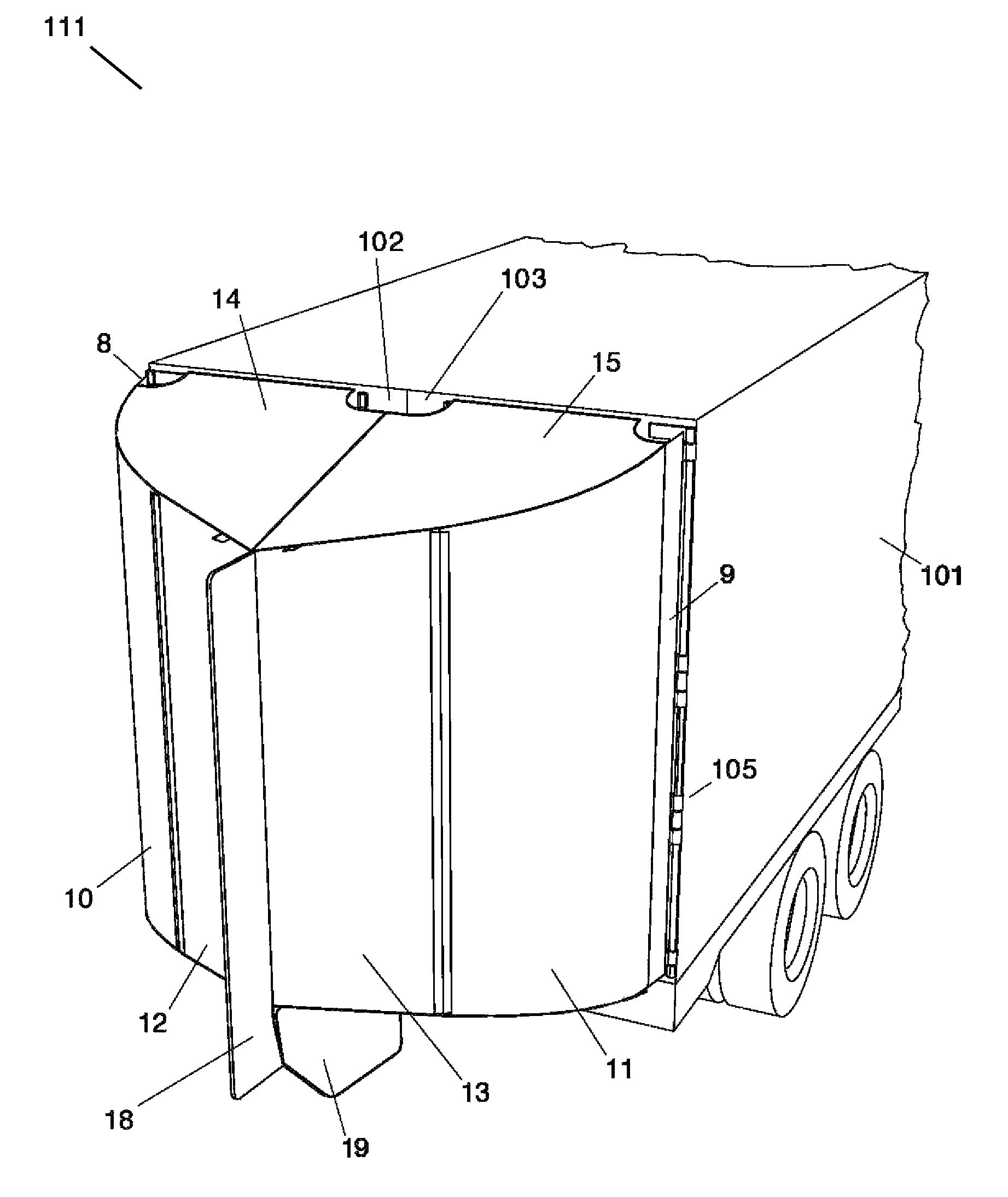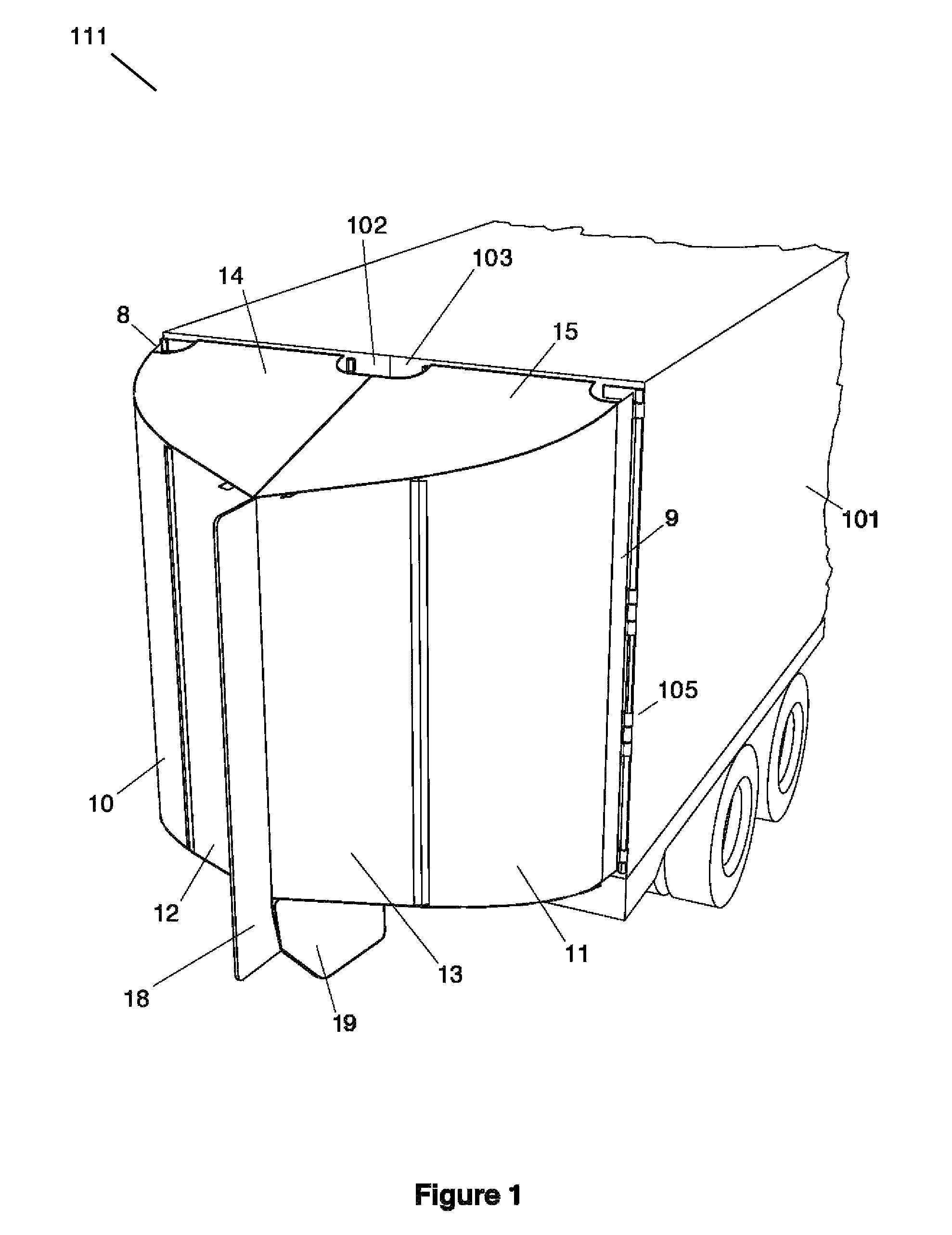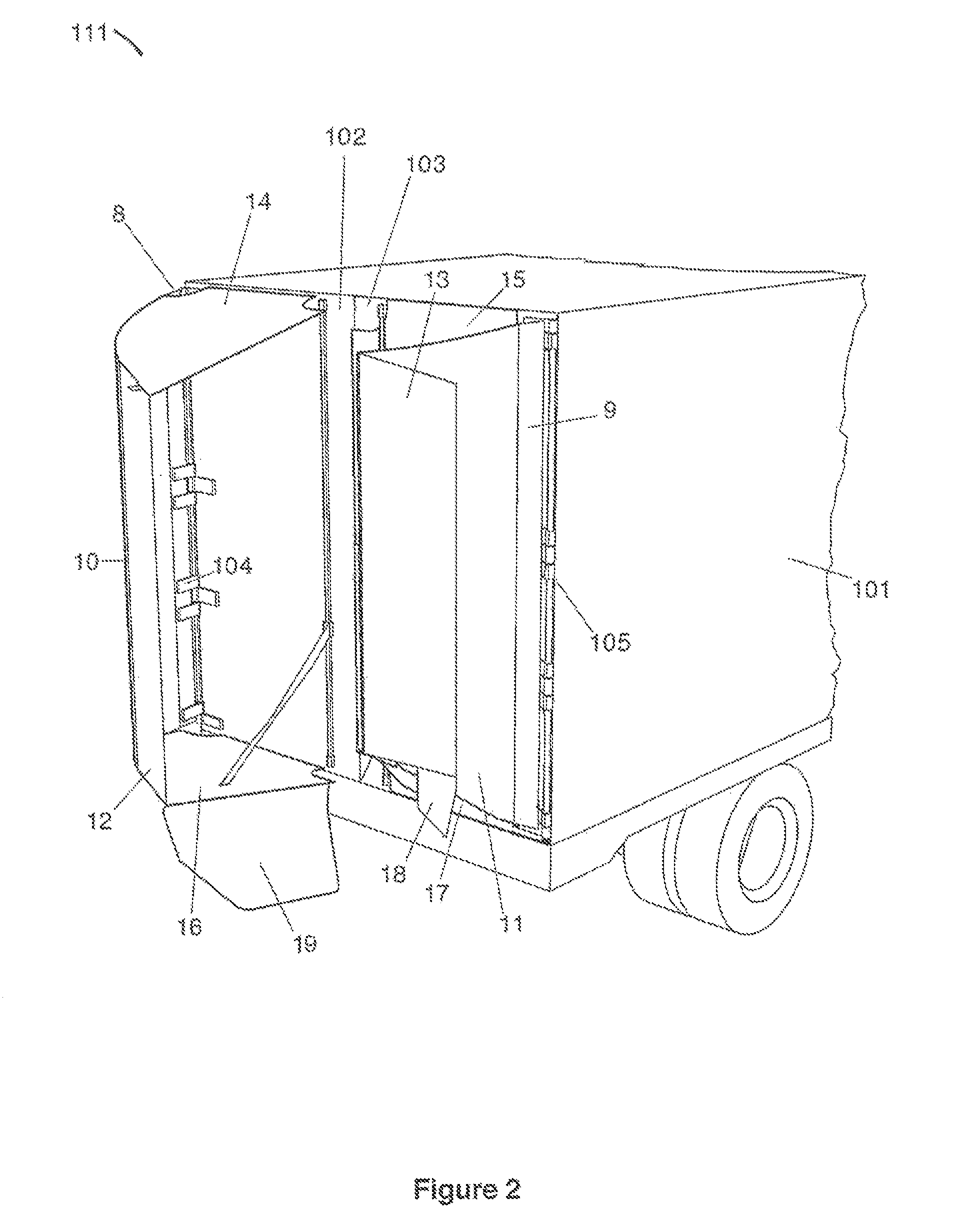Collapsible airfoil for trucks and trailers
a truck and trailer technology, applied in the field of truck and trailer collapsible airfoil, can solve the problems of not meeting the necessary conditions unable to meet the design requirements of a working device, increasing the length of the trailer, etc., to reduce the consumption of fuel, minimize the effect of wake, and minimize drag and turbulen
- Summary
- Abstract
- Description
- Claims
- Application Information
AI Technical Summary
Benefits of technology
Problems solved by technology
Method used
Image
Examples
Embodiment Construction
[0024]The tapered contour and teardrop shape of the present invention is formed by sheets of directionally flexible composite material, which are hinged on either side of the trailer via the existing door hinges. These primary panels form a contour ending in a wedge at the rear of the device, a shape established by other sheets hinged to the top and bottom of either door. The vertical sections consist of two distinct sheets, one hinged to the trailer 10&11 and the other to the end of the first section 12&13. They may be folded flat against the door along the axis of these sets of hinges as in FIG. 2. Their segmentation enables length sufficient for the panels to meet a full 4′ behind the trailer, but prevents them from extending beyond the center of the trailer when folded flat against the doors. When deployed, these panels 10, 11, 12&13 form a curved contour, as imposed by separate sheets hinged along the top 14&15 and bottom 16&17 of the trailer as in FIG. 4.
[0025]The primary vert...
PUM
 Login to View More
Login to View More Abstract
Description
Claims
Application Information
 Login to View More
Login to View More - R&D
- Intellectual Property
- Life Sciences
- Materials
- Tech Scout
- Unparalleled Data Quality
- Higher Quality Content
- 60% Fewer Hallucinations
Browse by: Latest US Patents, China's latest patents, Technical Efficacy Thesaurus, Application Domain, Technology Topic, Popular Technical Reports.
© 2025 PatSnap. All rights reserved.Legal|Privacy policy|Modern Slavery Act Transparency Statement|Sitemap|About US| Contact US: help@patsnap.com



